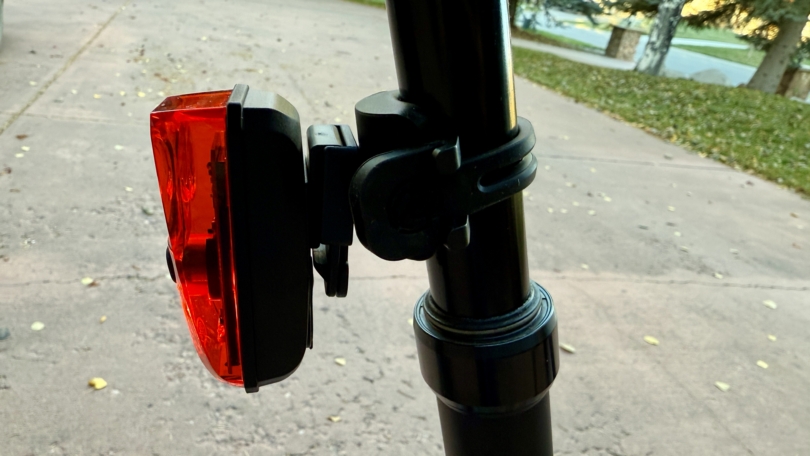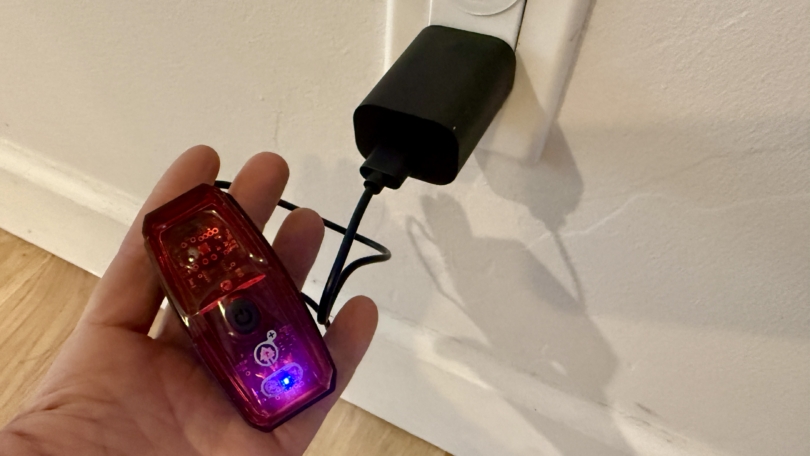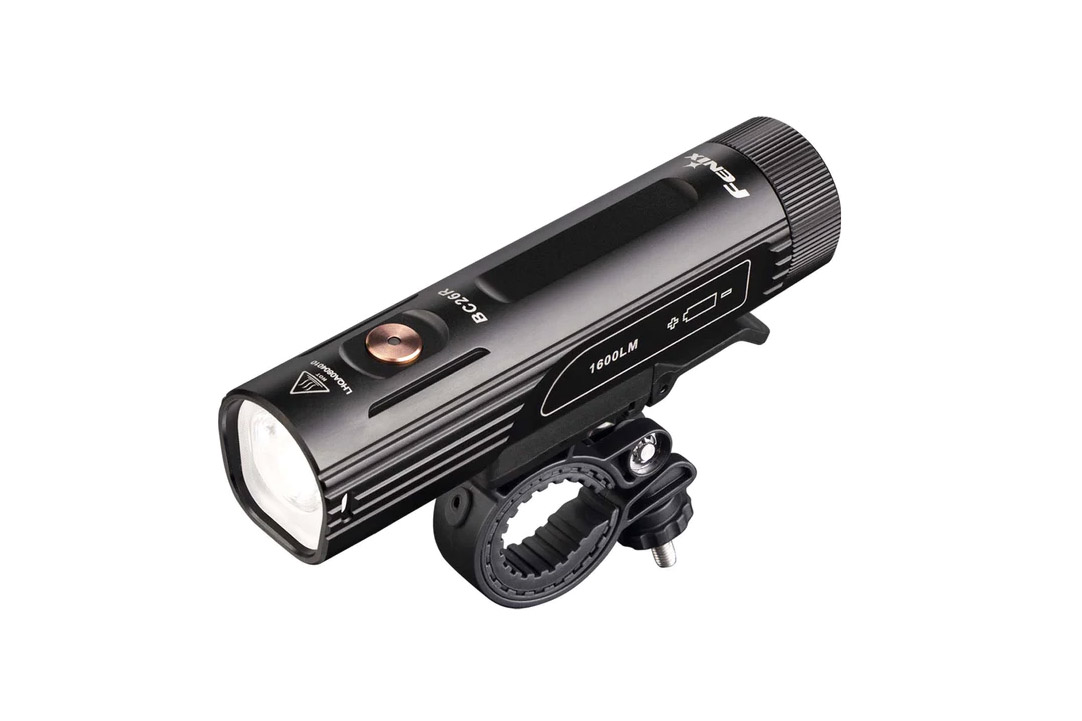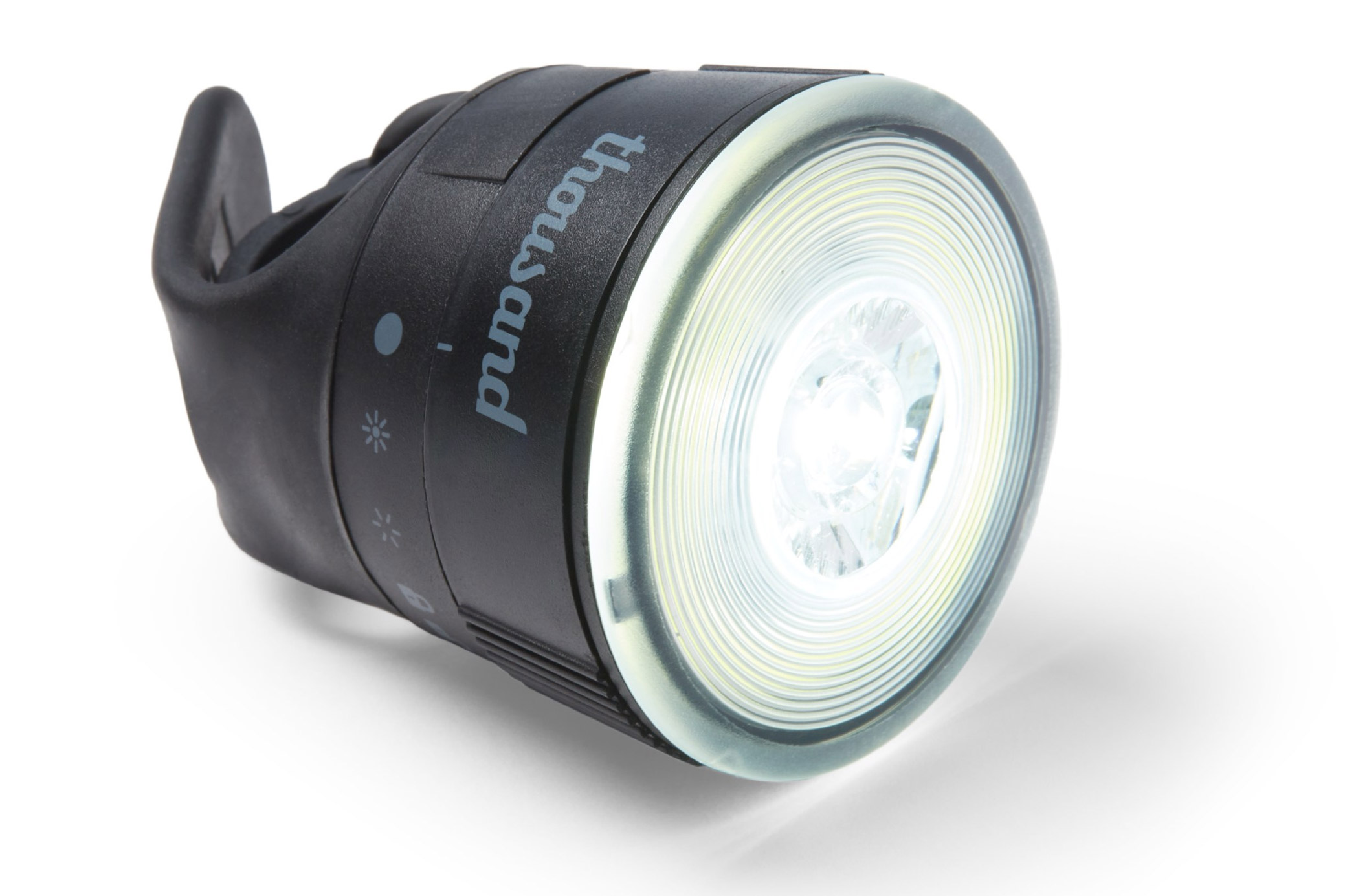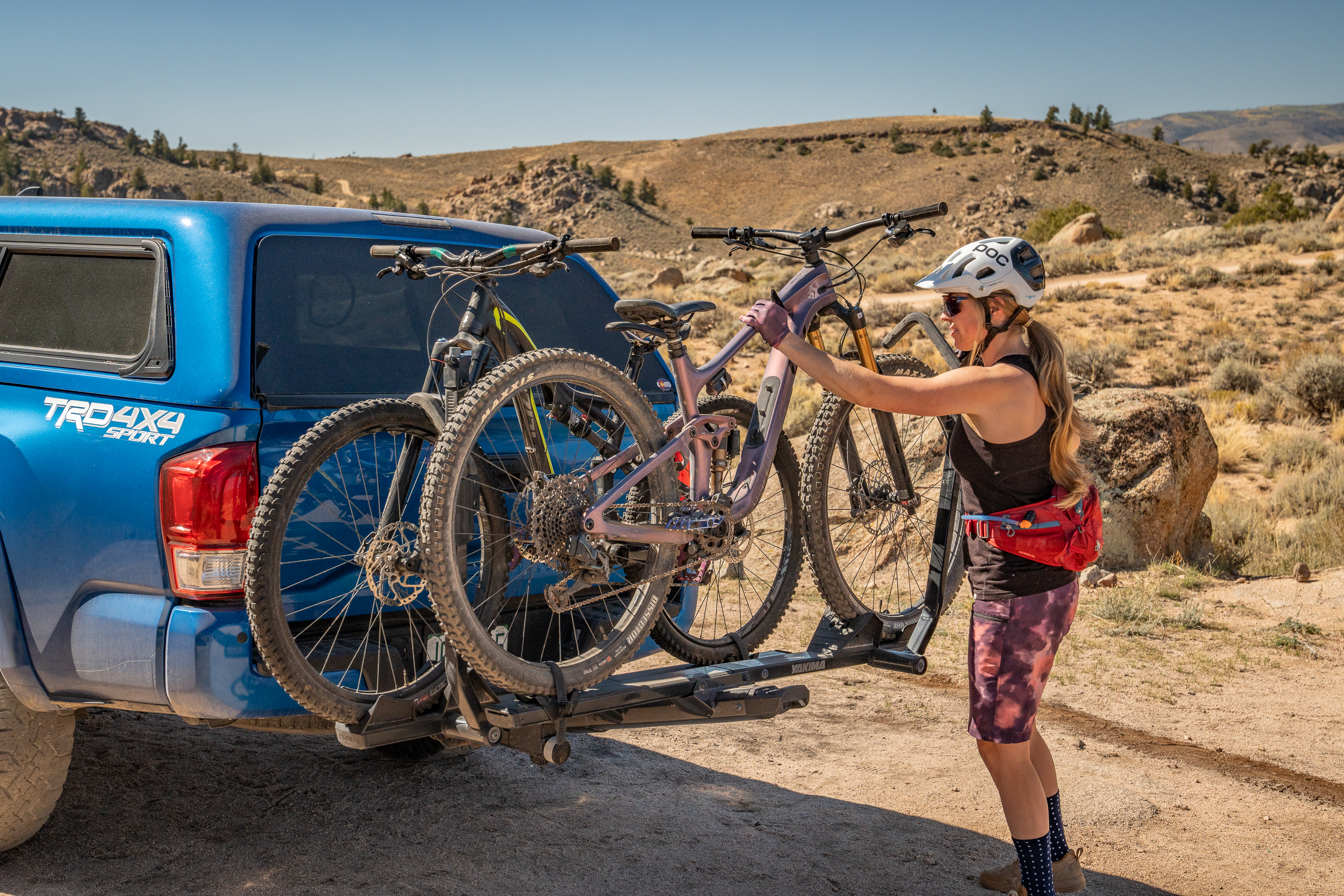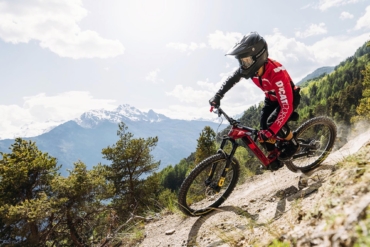On the road, bike lights are critical for our safety. Whether you need to see or be seen, the best bike lights of today have come a long way from the lights of yesteryear.
There are so many bike lights on the market these days that choosing the right ones can be downright frustrating. With front and rear lights, lumens, beam patterns, light modes, and more, understanding exactly what you need is a challenge in itself. For an all-around great pick for a front light, we recommend the Knog Blinder 900. If you’re looking for a set of lights, you won’t go wrong with the Knog Frog Bike Light Set.
To help, we rounded up our favorite bike lights and tested them for months. Our expert testers took evening grocery runs and early morning commutes and spent plenty of time riding dark bike paths, country lanes, and gravel roads to assess each model’s performance.
Below are our favorite bike lights for road, gravel, and commuting. If you’re a mountain biker, we have a full guide to the best mountain bike lights that will help you navigate singletrack long after sunset.
Editor’s note: After a summer of riding bikes, we updated this guide on October 30, 2025, with the addition of the Portland Designs Works Gravity Plus USB Tail Light. We also added detailed rating metrics to each product to help you better understand our scoring system, as well as an additional FAQ about light brightness for road biking versus trail biking.
The Best Bike Lights of 2025-2026
Knog Blinder 900
-
Brightness
9.0
-
Battery Life
9.0
-
Mounting and Ease of Use
8.5
-
Durability and Weather Resistance
9.0
- Max output (lumens): 900
- Battery capacity: 5000 mAh
- Run time (at max output): 2 hrs.
- Mounting options: Universal handlebar and GoPro mounts included
- Weight: Light: 148 g, handlebar mount: 18 g, GoPro mount: 12 g
Pros
- Looks cool
- Durable aluminum body
- Long run time on high
- Six light modes — flash and steady options
- Easy operation
- Fair price
Cons
- Rubber handlebar mount isn't the most secure
- Doesn't come with USB-C charging cord
- Longer charge time
Cygolite Dash Pro 600
-
Brightness
7.5
-
Battery LIfe
7.0
-
Mounting and Ease of Use
8.0
-
Durability and Weather Resistance
7.5
- Max output (lumens): 600
- Battery capacity: not specified
- Run time (at max output): 1 hr., 15 min.
- Mounting options: Universal handlebar
- Weight: 95 g
Pros
- Reasonable price
- Daytime Running Lights enhance safety
- 8 light modes
- Easy, intuitive mount
Cons
- Not as bright as other lights
- Longer charging time
Garmin Varia RTL515
-
Brightness
9.0
-
Battery Life
9.0
-
Mounting and Ease of Use
8.0
-
Durability and Weather Resistance
8.5
- Max output (lumens): 65 (day flash)
- Battery capacity: not specified
- Run time (at max output): 6 hrs.
- Mounting options: Seatpost (comes with shims for round, aero, and d-shaped posts)
- Weight: 71 g
Pros
- Drastically increases situational awareness and safety
- Highly visible light
- Picks up multiple approaching objects
- Excellent integration with Garmin Computer
Cons
- Not widely supported on all platforms
- Can't run multiple apps with Varia app
- Micro-USB charging is outdated
Portland Design Works Gravity Plus USB Tail Light
-
Brightness
7.5
-
Battery Life
9.0
-
Mounting and Ease of Use
8.2
-
Durability and Weather Resistance
8.5
- Max output (lumens): 100 lumens
- Battery capacity: Not specified
- Run time (at max output): 12 hours
- Mounting options: Seatpost and backpack clip mounts included; mounts vertically or horizontally
- Weight: 1.9 oz
Pros
- Automatic brake light enhances visibility
- Long battery life in flash mode
- Compact, lightweight design
- Easy to mount vertically or horizontally
Cons
- Not as bright as some competitors
- Accelerometer requires calibration and can still be finicky
Knog Frog Bike Light Set
-
Brightness
7.0
-
Battery Life
7.0
-
Mounting and Ease of Use
8.0
-
Durability and Weather Resistance
7.5
- Max output (lumens): front: 40, rear: 20
- Battery capacity: Not specified
- Run time (at max output): 3 – 4 hrs.
- Mounting options: Stretch silicone strap
- Weight: 20 g/each, 40 g/set
Pros
- Very lightweight
- Easy to install and remove
- Low-profile – aerodynamic
- Excellent battery life in flash modes
- Combo set makes you visible from front and rear
Cons
- Doesn't come with charging cable
- Kinda expensive for what it is
Brooklyn Bicycle Co. Uptown Bike Lights
-
Brightness
6.5
-
Battery Life
7.0
-
Mounting and Ease of Use
6.0
-
Durability and Weather Resistance
7.0
- Max output (lumens): front: 150, rear: 60
- Battery capacity: 650 mAh
- Run time (at max output): Not specified
- Mounting options: Rubber strap or body clip
- Weight: 47 g/each, 94 g /pair
Pros
- Affordable
- Bright
- Makes you visible day or night
- Mount to bike or body
Cons
- Kinda chunky appearance
- Only 4 light modes
- Not the lightest
Outbound Lighting Detour
-
Brightness
8.5
-
Battery Life
9.0
-
Mounting and Ease of Use
9.0
-
Durability and Weather Resistance
9.0
- Claimed lumens: 1,200
- Battery capacity: 5,000 mAh
- Charge port: USB-C pass-through
- Mounting position: Handlebar
- Verified weight: 152g light, 42g mounting bracket
Pros
- Horizontal cutoff protects oncoming drivers
- Pass-through USB-C charging means unlimited runtime
- Clever, fuss-free, and quick mounting system
- Very wide and expansive beam pattern
Cons
- Not the most powerful bike light
Because Second Place Still Glows
While these bike lights didn’t make our top picks, that are still some great options that are worth considering.
-
Brightness
9.0
-
Battery Life
9.0
-
Mounting and Ease of Use
8.5
-
Durability and Weather Resistance
9.0
- Max output (lumens): 1,600
- Battery capacity: 5,000 mAh
- Run time (at max output): 3.5 hrs.
- Mounting options: Handlebar
- Weight: 155 g
Pros
- Super bright
- Swappable batteries
- Excellent dust & debris repellency
- Shockproof to 1.5 meters
- Good handlebar mount
Cons
- Longer-than-average charge time
-
Brightness
8.5
-
Battery Life
8.0
-
Mounting and Ease of Use
8.0
-
Durability and Weather Resistance
8.0
- Max output (lumens): 150
- Battery capacity: Not specified
- Run time (at max output): 4.5 hrs.
- Mounting options: Seatpost mount or clip-on
- Weight: 59 g
Pros
- Affordable
- Mounts to bike or clips onto clothing/bags
- Lightweight and compact
- Bright
- Six light modes
- Charges quickly
Cons
- Basic compared to high-end options
-
Brightness
6.5
-
Battery Life
7.0
-
Mounting and Ease of Use
6.0
-
Durability and Weather Resistance
7.0
- Max output (lumens): front: 450, rear: 50
- Battery capacity: Not specified
- Run time (at max output): 1.5 hrs.
- Mounting options: Handlebar, seatpost
- Weight: Front: 90 g, rear: 55 g
Pros
- Affordable
- Easy to mount
- Front and rear light package
- Great for daytime and twilight
Cons
- Front light handlebar clamp won't fit 35mm bars
- Not the brightest front light
-
Brightness
5.5
-
Battery Life
7.0
-
Mounting and Ease of Use
7.0
-
Durability and Weather Resistance
6.5
- Max output (lumens): 100
- Battery capacity: Not specified
- Run time (at max output): 8 hrs.
- Mounting options: Handlebar
- Weight: 60 g
Pros
- Inexpensive
- Stylish
- Lightweight
- Good battery life
Cons
- Not very bright
-
Brightness
8.5
-
Battery Life
7.5
-
Mounting and Ease of Use
7.5
-
Durability and Weather Resistance
8.0
- Max output (lumens): 1,300
- Battery capacity: 5,000 mAh
- Run time (at max output): 1.5 hrs.
- Mounting options: Handlebar
- Weight: 192 g
Pros
- Super-bright clear light
- Wide illumination
- Good mounting ergonomics
- Double-click safety feature
- Bluetooth connectivity
Cons
- Short life on full-blast
- Super long charging time
- Moderately expensive
-
Brightness
6.0
-
Battery Life
7.0
-
Mounting and Ease of Use
6.6
-
Durability and Weather Resistance
7.0
- Max output (lumens): 200 white light, 40 red light
- Battery capacity: not specified
- Run time (at max output): Front: 2 hours at 200 lumens, rear: 4 hours at 40 lumens
- Mounting options: Handlebar, helmet, or clip-on
- Weight: 78 g
Pros
- Perfect for when you realize you need a front light to make it home, but didn’t pack one (or don’t own one)
- Functional as front or rear light
- Super versatile
- Reasonably priced
Cons
- You may want to buy two — while it’s cool to have the front light option, using the front light means you’re riding without a rear light
- Not very bright for a front light
-
Brightness
7.0
-
Battery Life
7.0
-
Mounting and Ease of Use
6.5
-
Durability and Weather Resistance
7.0
- Max output (lumens): 15
- Battery capacity: 210 mAh
- Run time (at max output): 1.5 hrs.
- Mounting options: Seatpost
- Weight: 29 g
Pros
- Rechargeable lights are rarely this inexpensive
- Not needing to replace a battery is a major plus
- Super lightweight
- Simple and effective
Cons
- Some riders report issues with the mounting strap, which may depend on your seat post's size and shape
Bike Lights Comparison Chart
| Light | MSRP | Position | Max Output (Lumens) | Runtime (At Max Output) |
|---|---|---|---|---|
| Knog Blinder 900 | $80 | Front | 900 | 2 hrs. |
| Cygolite Dash Pro 600 | $65 | Front | 600 | 1 hour |
| Garmin Varia RTL515 Rear Light | $200 | Rear | 60 | 6 hours |
| Portland Design Works Gravity Plus USB Tail Light | $40 | Rear | 80 | 30 hours (in flash mode) |
| Knog Frog Bike Light Set | $55 | Both | 40 (front), 20 (rear) | 3 – 4 hours |
| Brooklyn Bicycle Co. Uptown Bike Lights | $25 | Both | 150 (front), 60 (rear) | Not specified |
| Outbound Lighting Detour | $185 | Front | 1,200 | 1.7 hours |
| Fenix BC26R Rechargeable Bike Light | $89 | Front | 1,600 | 3.5 hours |
| NiteRider Vmax+ 150 | $35 | Rear | 150 | 4.5 hours |
| Cygolite Streak Front and Rear Set | $51 | Both | 450 (front), 50 (rear) | 1.5 hours |
| Thousand Traveler Magnetic Bike Light | $35 | Front | 100 | 8 hours |
| Bontrager Ion Pro RT | $155 | Front | 1,300 | 1.5 hours |
| Blackburn 2’Fer-XL | $49 | Either | 200 (white light), 40 (red light) | 2 hours (front), 4 hours (back) |
| Lezyne Femto USB-C Rear | $20 | Rear | 15 | 1.5 hours |
How We Tested Bike Lights
Our expert testing team is composed of experienced cyclists and outdoors-oriented people looking for the best products on the market. Our staff includes former bike racers, recreational cyclists, folks who bike-commute 60 miles a week, and everyone in between — people who care about fit, finish, and function in every product we use.
We take two approaches to our hands-on testing of bike lights. First, we take a look at the manufacturer’s specs and see if they hold up to real-life use, running down the batteries at different power levels and recharging them (when applicable). Then, we mount each light to our bikes and pedal off into the dark, looking at beam distance and how difficult (or easy) it is to change lighting modes and settings. Needless to say, the brightest light isn’t necessarily the best.
Our Expert Testers
Paul Mandell has two decades of experience in the saddle as a competitive racer and recreational rider. He completed his master’s degree in exercise science, where he studied the critical power model for cycling. These days, he prefers lift-accessed gravity riding and long adventure rides with plenty of descending. He still finds time to get out for the occasional gravel grind or single-track loop near his home base in California’s Eastern Sierra.
Additional testing was done by GearJunkie Editors Seiji Ishii and Jeremy Benson. Ishii has been cycling for the past four decades and has seen the evolution of bike lights in that time. From the clunky, big, and heavy lights of yesteryear to the advanced, compact, lightweight, and bright lights of today, he’s tried them all. A resident of Texas, Ishii often uses lights while riding after sunset to beat the summer heat.
Benson has been professionally testing bikes and related accessories for the past 8 years. He spends lots of time riding bikes for product testing, training, and fun, and would rather finish a ride in the dark than spend another day on the indoor trainer. He’s used dozens of bike lights over the years and has an appreciation for modern lights that he can easily carry with him and pull out when the sun goes down, and he’s still miles from home.
GearJunkie contributor Heather Balogh Rochfort is the most recent author of this guide. Based outside of Aspen, Colo., Balogh Rochfort has spent the last 25 years of her life on bikes in all forms. These days, you’re more likely to find her on rural forest roads at dusk than commuting through urban landscapes, but she still loves to explore the world from two wheels — regardless of whether they’re road gravel, or mountain bike tires.

Our Bike Lights Rating System
Brightness
How visible the light makes you to others—and how well it illuminates the road or trail. This includes lumen output, beam shape, and how evenly it spreads light in real riding conditions. A good light balances brightness with clarity without creating glare for other riders or drivers.
Battery Life
Assesses how long the light runs on each mode and how reliable the power system is over time. Includes battery capacity, real-world runtime compared to claims, and charging speed or convenience (USB-C, replaceable batteries, etc.). Consistency and efficiency matter as much as total runtime.
Mounting & Ease of Use
Looks at how secure and intuitive the mounting system feels on the bike, helmet, or gear. This covers mount stability, adjustment range, and how quickly you can remove or reposition the light. Also evaluates user interface—buttons, mode switching, and operation with gloves.
Durability & Weather Resistance
Rates how well the light holds up to vibration, impact, and wet conditions. Includes build materials, IP rating, and overall craftsmanship. A high-quality light should withstand daily use, foul weather, and the occasional drop without losing performance.
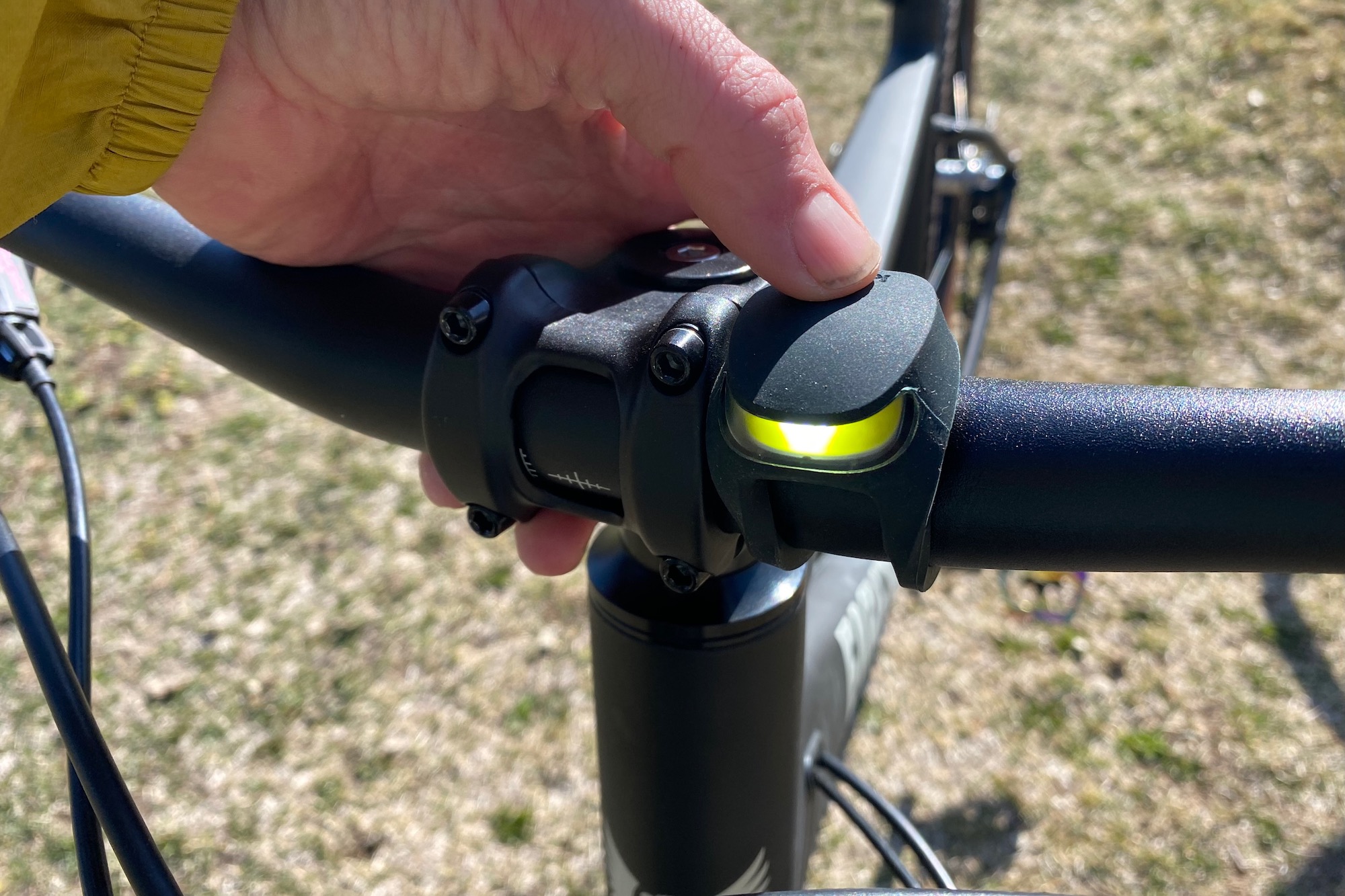
Buyer’s Guide: How to Choose a Bike Light
Every cyclist should have a set of reliable bike lights. When choosing the ideal lights to fit your needs, the sheer number of options on the market can feel confusing and difficult to navigate. From front and rear lights to lumens and side visibility, there are numerous factors that must be considered when selecting bike lights.
In this buyer’s guide, we’ll break down each of these factors and hopefully simplify your selection process. You’ll be cruising down well-lit roads, paths, and trails in no time.

Brightness and Lumens
Just about every bike light on the market comes with a rating in lumens. Lumens are a unit of brightness. Simply put, the higher the lumens, the greater the brightness. However, while the lumen count is a good place to start when thinking about brightness, it doesn’t tell the whole story.
Ultimately, the brightness of a bike light is a product of the lumen count, beam width, and beam angle. A light with a super-high lumen count is great, but only if it has been designed to use its brightness effectively. Some, like the Cygolite Dash Pro 600, have a medium output but still make a great option for commuters. Others, like the Outbound Detour Lighting Set, are quite bright and work well at night.
Because every cyclist has different needs, there is no fixed lumen count that every shopper should aim for. If you are riding in the daytime and simply want to increase your visibility and be seen by other road users, 100+ lumen front and rear lights should be sufficient.
If you are riding in urban environments in the dark and need enough light to see where you are going, you’ll want a front bike light with at least 400 lumens. If you plan to ride on roads or bike paths in the dark with no artificial lighting, we recommend a front bike light with at least 600 lumens. While brightness is good, some lights can also be too bright and may wash out finer details in some situations.

Front bike lights are brighter than rear bike lights because they must illuminate the road ahead. Rear lights are meant to help you stand out from other people on the road or trail and generally emit red light.
It is important to note that most bike lights are not able to sustain their highest brightness setting for more than an hour or two. If you purchase a light that boasts 1,000 lumens, just know that the light will not be able to remain on that setting indefinitely.
It is important to note that most lights have multiple brightness settings. For example, some lights may have four levels of brightness: Boost (1,800 lumens), High (1,500 lumens), Medium (700 lumens), and Low (350 lumens). Riders have the ability to choose the setting that best suits their needs. Battery life corresponds directly to the level of brightness, and lights will run much longer on lower settings.
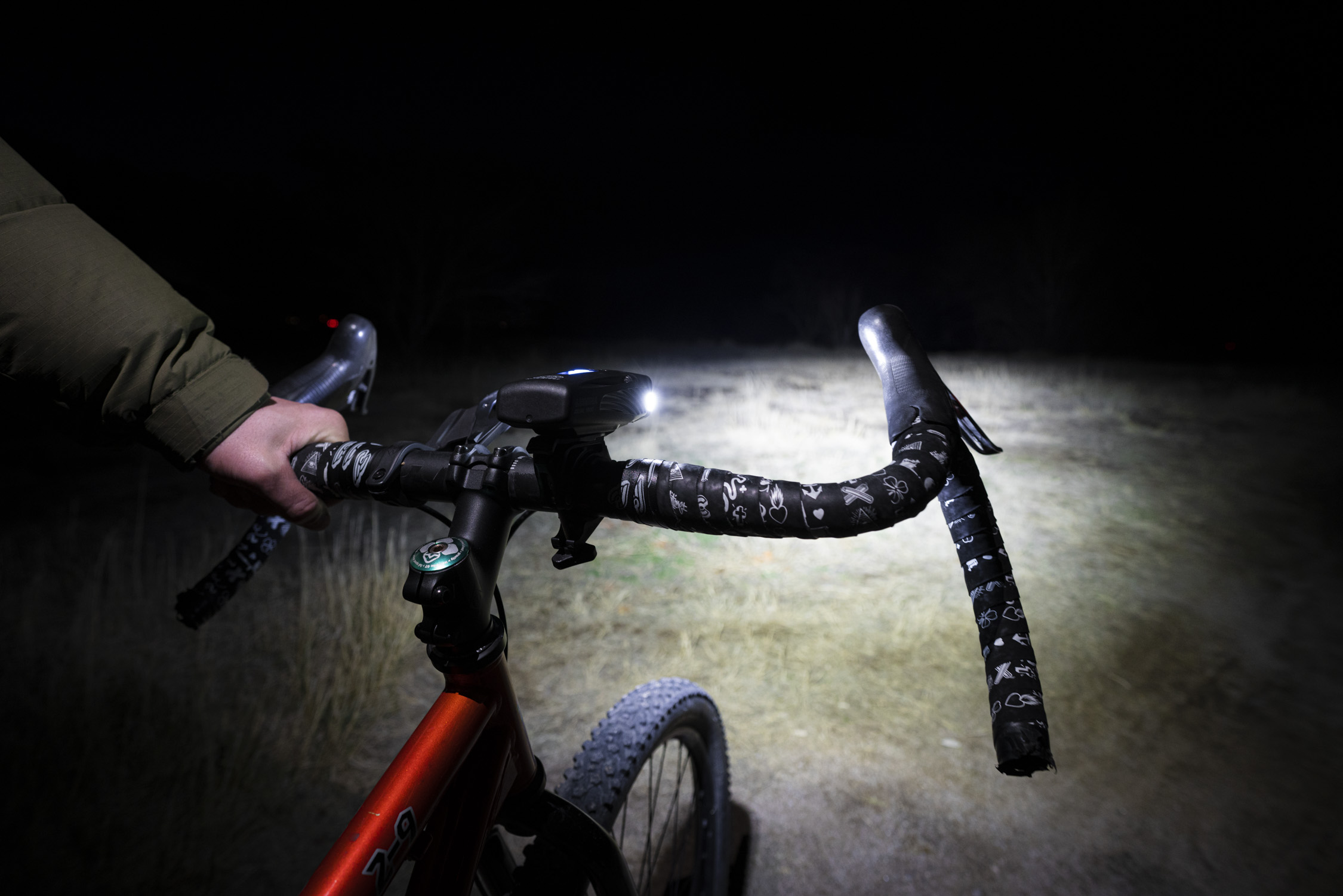
Front Lights vs. Rear Lights
While front lights like the Knog Blinder 900 need to be bright enough to light up the world in front of you, rear lights are mostly a safety mechanism that improves your ability to be seen. Most front lights are significantly brighter than their red-light-emitting rear counterparts. Front lights typically mount to the handlebars or front stem, while rear lights mount to the seat post or rear frame.
For road riding or commuting, we recommend picking up both a front and a rear light. Also, consider what you need the lights for. If you are only trying to make yourself more visible in the daytime, then you may not need the brightest front light. If you need to see in the dark, then you’ll want to consider some of the brighter front light options. Simply put, your needs may vary based on your riding preferences.
We’ve mostly outlined our favorite front and rear lights based on their own merit, but most of the front lights are also sold as bundles with a rear light. On this list, the Cygolite Streak Front and Rear Set is a great, affordable set of bike lights.
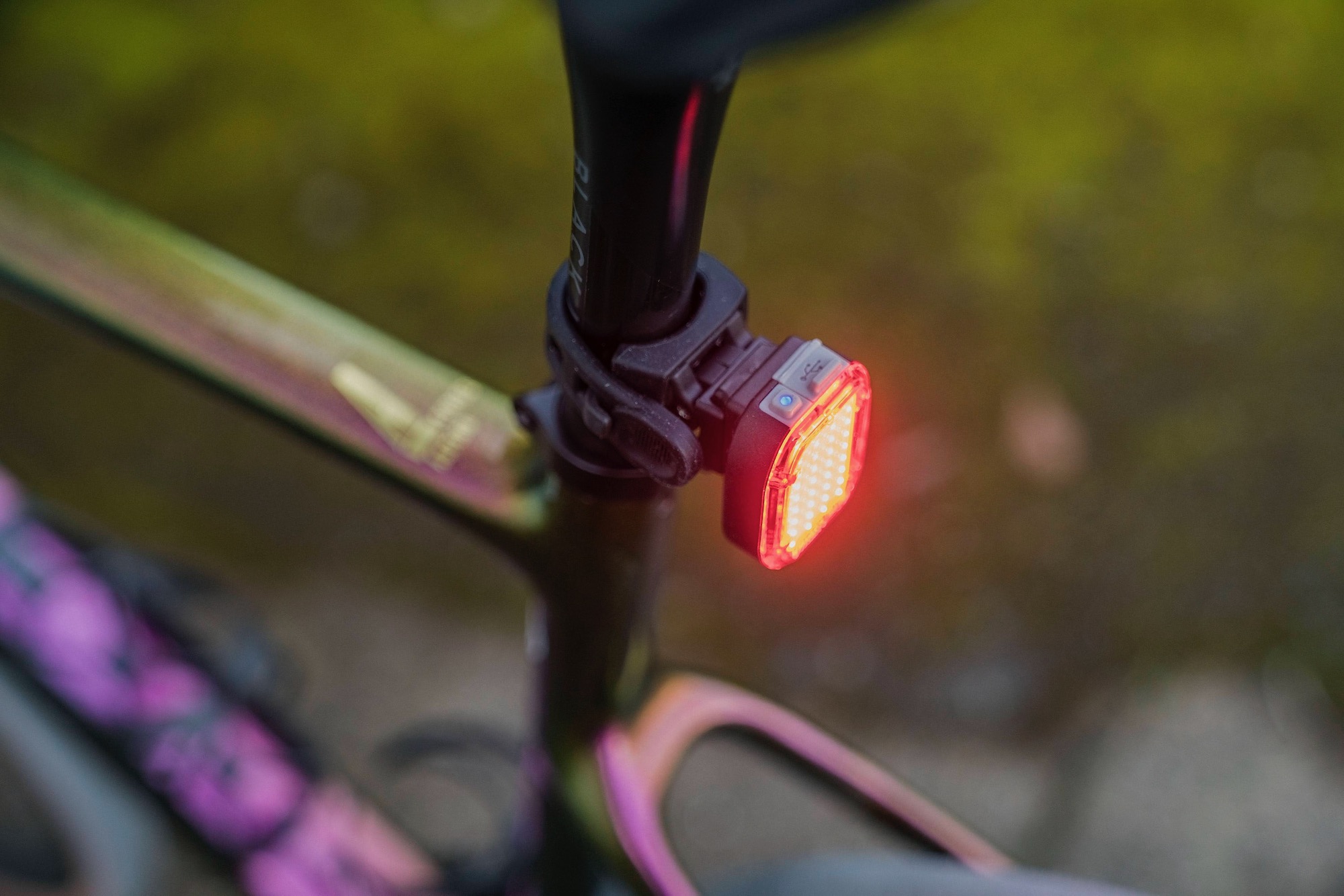
Bike Lights for Different Kinds of Riding
Sometimes, you’ll find a bike light like the Fenix BC26R Rechargeable Bike Light and it works no matter what type of bike you ride. Other times, you’ll need to be more specific.
Road Riding and Commuting
Road riding generally involves straight lines and few obstacles. Riding on the road, whether for commuting, training, or just for fun, also involves interacting with traffic. Aside from lighting the way in front of you while riding in poor lighting, one of the primary purposes of bike lights is to be seen — even in the daytime. For this reason, we recommend front and rear lights so motorists approaching from the front and behind can see you.
For this kind of riding, we recommend a handlebar-mounted front bike light with a more focused beam that directs the majority of its brightness straight ahead. At the same time, it’s nice to have some light in the periphery to see potential hazards as you ride. The best front lights have a balanced beam that casts light a long distance and spreads a bit of light to the sides. We also look for daytime flash modes to make us more visible in broad daylight.
Rear lights are typically a bit simpler and they don’t need to be nearly as bright as front lights to make you visible. Rear lights are almost always red and will typically have both steady and flashing light modes. The seatpost is the usual clamping location, although some rear lights can be attached to clothing or bags, too. On this list, the Garmin Varia RTL515 is an excellent road-riding light that makes you visible to motorists and has a radar function that can show you approaching vehicles on your Garmin computer.
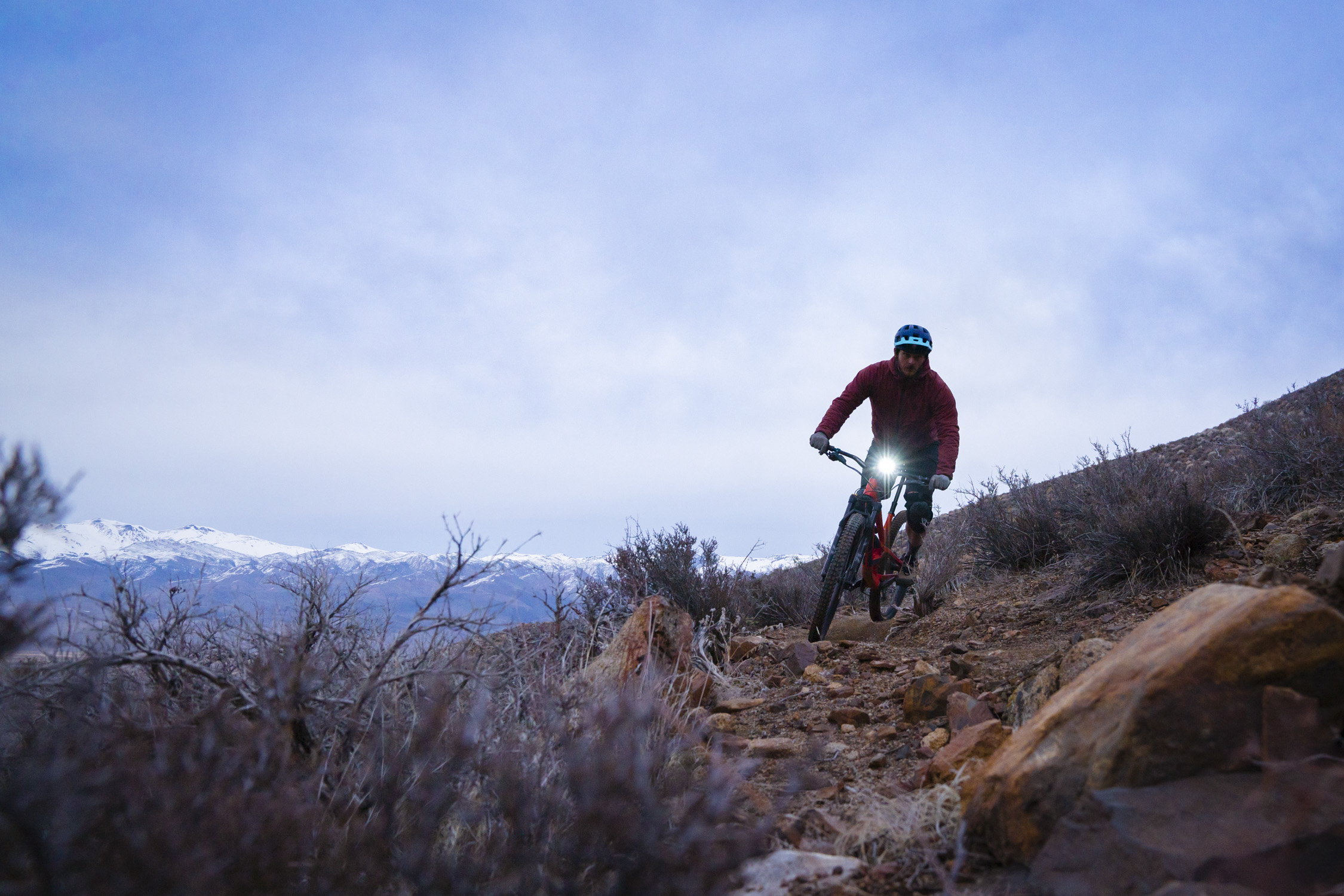
Mountain Biking
Mountain bikers need to be able to see obstacles long before they reach them. Unlike most road cycling, mountain biking involves sharp turns and lots of major obstacles. Generally speaking, it helps to have brighter lights when riding on trails, and it is beneficial to have lights on both your handlebar and your helmet. Unless you are riding on roads to and from the trails, most mountain bikers don’t use rear lights.
For a more detailed dive into lights for off-road riding, check out our guide to the best mountain bike lights.
Side Visibility
Side visibility can be an important factor to consider, and some lights rate higher in this category than others, such as the Lezyne Femto USB-C bike light. When riding through busy streets, improved side visibility can help prevent accidents before they happen.
Most lights, both front and rear, intended for road riding or commuting, have been designed to provide some level of side illumination. Often, these are small windows on the side of the light housing that emit a small but noticeable amount of light. In other cases, the lens of the light may be curved to be visible across a wider viewing angle. Regardless of how its achieved, it is a feature we appreciate and look for in bike lights.
Light Modes
The best bike lights have multiple light modes to suit varying needs and preferences. This often includes several steady modes with different levels of brightness, as well as a few flashing modes. The steady modes work best for lighting the way ahead of you so you can see where you are going in low light or darkness. Typically, the different levels are fixed at intervals chosen by the manufacturer, but provide a range of brightness for different situations. For example, the Bontrager Ion Pro comes with 5 light modes to choose from.
Flashing modes are great because the intermittent flashes of light are attention-grabbing and may make you more visible to motorists than a steady light. These are most useful in the daytime for being seen, and the best front and rear lights usually have a few different flash or pulse modes.
Additionally, some lights have a steady pulse or steady flash mode where the light is on steadily and is accompanied by a flash or pulse. In low light or darkness, the steady flash allows you to see while also having the benefit of the attention-grabbing flash.
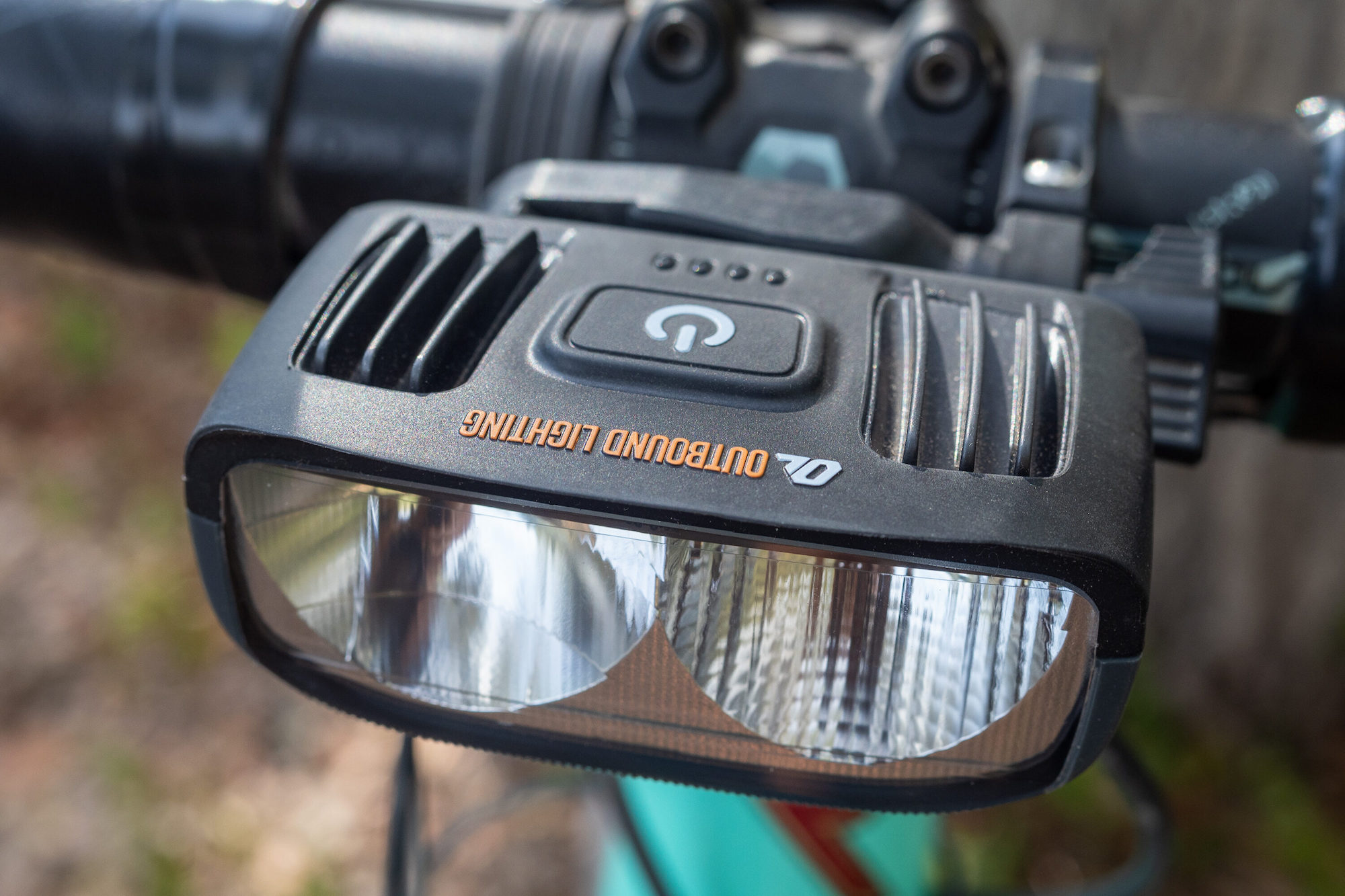
Battery Life and Burn Time
Battery life depends on many factors, including the size and type of battery, the type of LEDs in the light, brightness, and the light’s settings/modes. Some smaller lights, like the Knog Frog Bike Light Set, come with shorter run times but are easily recharged.
Most rechargeable bike lights come with multiple settings. The highest and brightest setting will deplete the battery the fastest and vice versa. Good visibility is important, but you should always try to avoid unnecessarily bright settings in order to prolong your light’s burn time — especially on longer rides. You don’t always need to use the brightest mode on a light for it to be effective.
Flashing pulse settings tend to use less light than a steady beam, and they are great for being seen in the daytime. It depends on the light in question but, often, the flash settings can double or quadruple the run times.
When determining which light will work best for your needs, it’s incredibly important to know how you’ll be using it. Do you need a light to last for three hours on its highest output mode for nighttime training rides? Do you need an emergency light to carry with you in case you mis-timed your route and the sunset? Or do you need some flashing lights to last all day on a century group ride? Knowing your lighting needs should help you narrow down the choice to find a light with a run time to match.

Mounting
Mounting front and rear bike lights is typically a relatively simple process. All of the lights we tested, like the Portland Designs Works Gravity Plus USB Tail Light or the Brooklyn Bicycle Co. Uptown Bike Lights, come with at least one mounting system and few provide multiple options. Generally speaking, front lights mount to the handlebar while rear lights mount to the seatpost.
While many mounting systems are self-explanatory like the NiteRider Vmax+ 150, we recommend that users always read the manufacturer’s instructions for mounting. The majority of mounts are relatively universal in terms of fit and will work with a range of handlebar and seatpost diameters and shapes. This is not always the case, so it is worth checking the specs to make sure. And of course, there are some unique mounts, like with the Thousand Traveler Magnetic Bike Light.
Depending on the surfaces and terrain you ride on, the stability of your bike lights may be a concern. If you ride rough gravel roads or particularly bumpy pavement, some lights can be prone to shifting. If that sounds like you, then a more secure clamp-style mount may be preferred over a stretchy rubber attachment. Similarly, some brands have mount options for GoPro-style attachments that can work with computer mounts or on bike helmets.
We especially appreciate lights that are easy to mount and dismount. When locking up your bike in a public place, you’ll want to be able to easily and temporarily remove your lights to prevent theft. The Cygolite Dash Pro 600 and the Lezyne Lite Drive 1000XL are among the easiest lights we tested to mount and dismount.
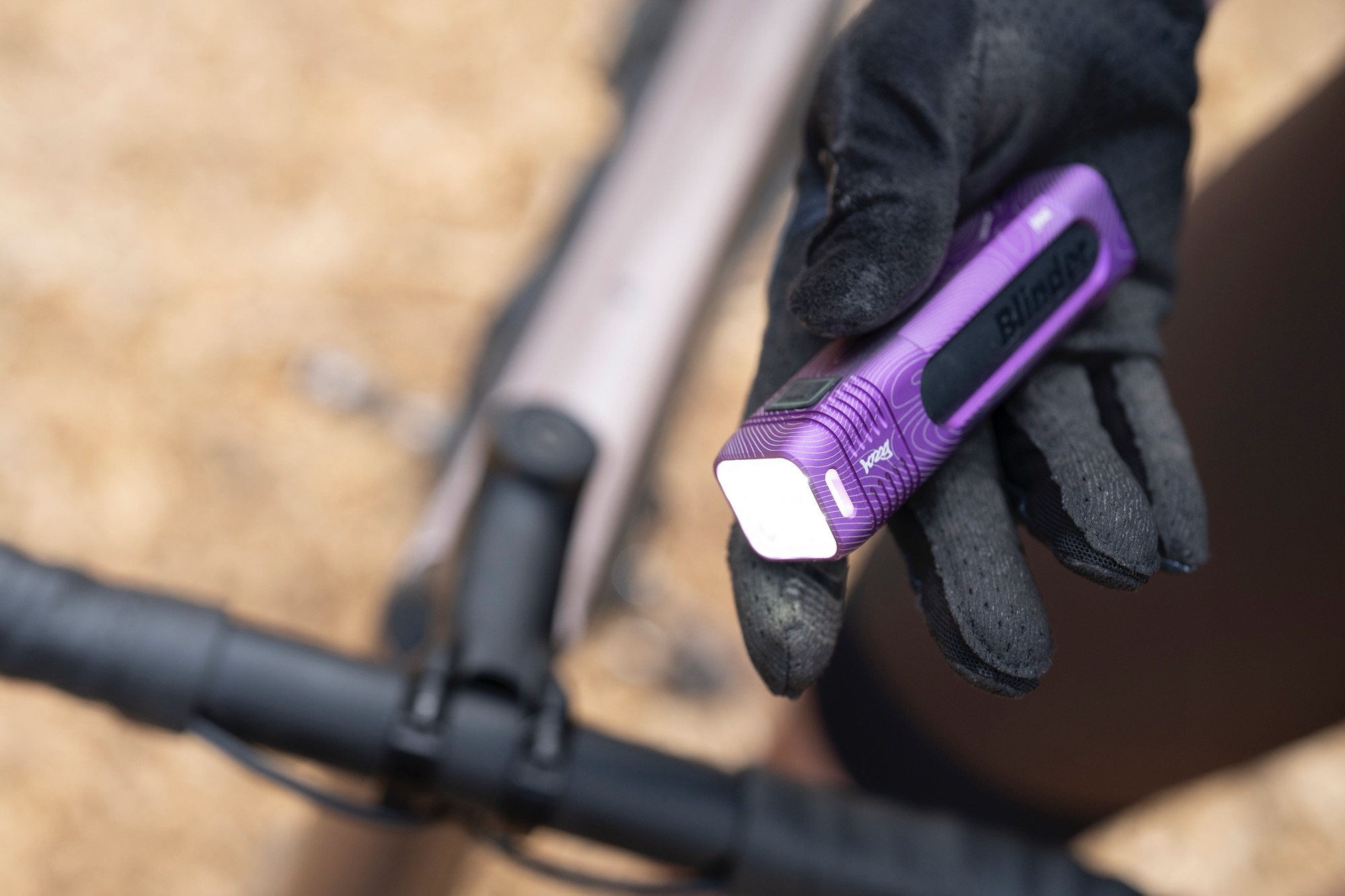
Price & Value
Bike lights vary wildly in price. Like most things, you generally get what you pay for. While it isn’t necessary to buy the most expensive light out there, we do recommend that you go for the nicest lights that you can afford. When you’re riding home in the dark, you’ll appreciate having a reliable light with plenty of battery life to keep you rolling along safely.
Budget
There are lots of super cheap, off-brand bike lights on the market. You could buy a front light off Amazon for $20, which might work, but will probably make some major sacrifices in terms of brightness, mounting, battery life, and build quality. While these will usually do okay in a pinch, we always recommend going with an established bike light brand.
If you just need something simple for being seen on your daily commute, an inexpensive front and rear set like the Brooklyn Bicycle Co. Uptown Bike Lights ($25) will do the trick. If you want something a little sleeker, lighter, and with more light modes, the Knog Frog Bike Light Set ($55) costs a bit more but is a better option for road and gravel riding. The Portland Designs Works Gravity Plus USB Tail Light ($40) is another top pick for being seen while on the road, and it comes with an accelerometer to help warn cars that you are braking. And we can’t forget the Thousand Traveler Magnetic Bike Light ($35), another one of our top budget picks.
The Cygolite Dash Pro 600 is our favorite value option, boasting solid performance with its 600 lumens, multiple light modes, and $65 price tag. Similarly, the Cygolite Streak Front and Rear Set ($62) is a solid value for a combo that will cover most people’s needs. The Blackburn 2’Fer-XL ($49) is a double threat as it can perform as a white light on the front or as a red rear light, depending on your needs.
Rear lights are generally much less complicated, less bright, and, therefore, less expensive than front lights. Even the least expensive options, like the Lezyne Femto USB-C ($20), are rechargeable, bright enough, and easy to use.
Mid-Tier
As you go up in price, even just slightly, front lights are brighter, fit and finish improve, and the overall quality is higher. In fact, two of our favorite front lights fall at the low end of the mid-tier price range. Our top overall pick, the Knog Blinder 900 ($80), earned its spot for its robust build, compact form, ease of use, and 900-lumen max output, which makes it a solid choice for a huge range of riders.
Similarly, the Fenix BC26R ($89) is a killer bike light made by a respected flashlight brand. At 1,600 lumens, it might be overkill for a lot of riders, but it boasts impressive run times, a nice form factor, a sturdy mount, and you can even swap batteries should the need arise. We’re surprised this light doesn’t cost more.
For rear lights, we like the NiteRider Vmax+ 150 ($35). Its max output of 150 lumens is probably overkill for a rear light, but it has multiple steady and flash modes, a long battery life, easy operation, and ensure that you’re seen by motorists coming from behind.
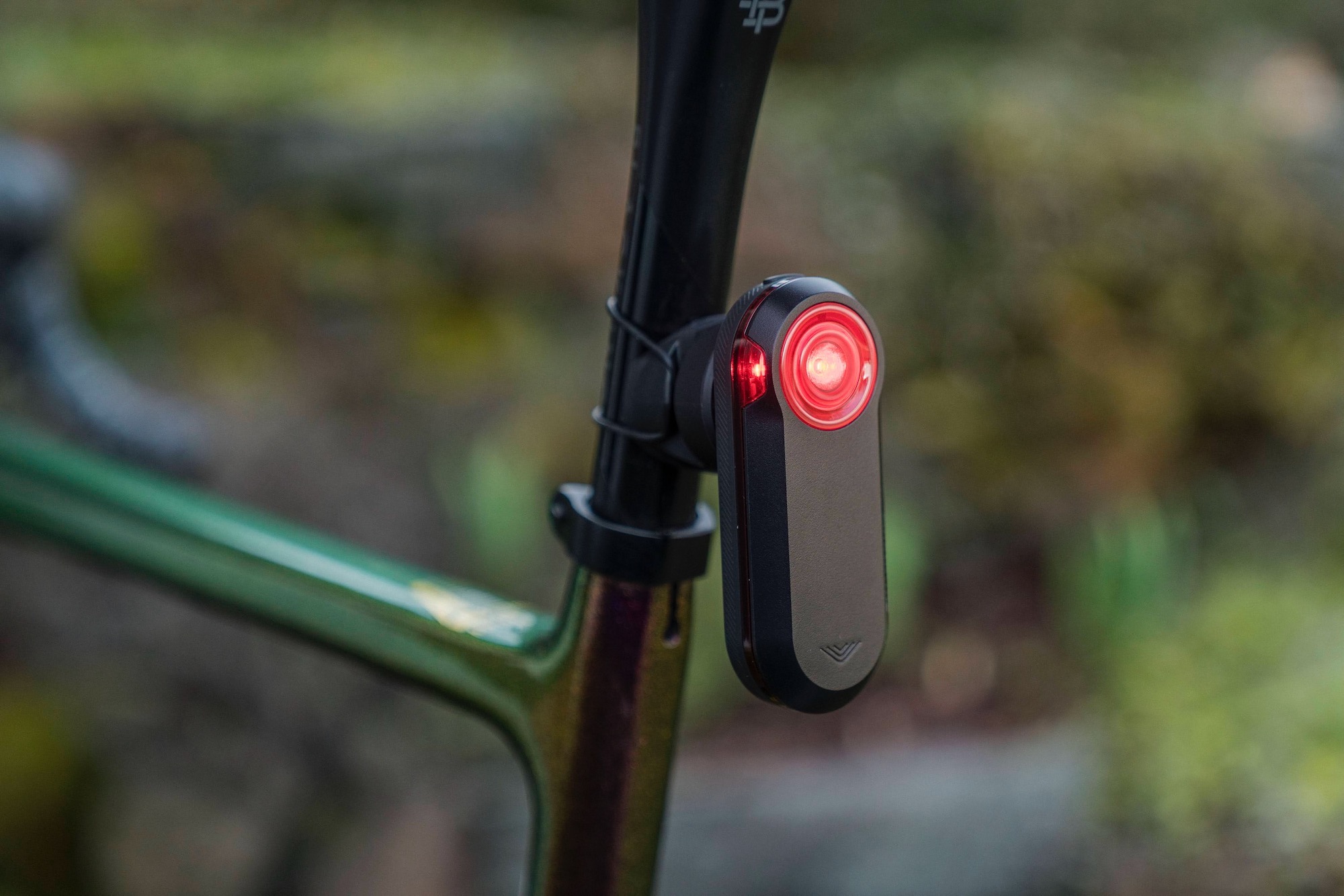
Premium
As prices climb up into premium territory, that often correlates to an increase in brightness and/or more advanced features.
The 1800 has dual beams with two LEDs, two lenses (distance and spread), and a larger battery. It might be overkill for most road riding, but it would be a great do-it-all light for those who mix it up on the mountain bike as well.
The Outbound Lighting Detour ($185) also commands a premium price along with the premium lighting performance to match. At 1,200 lumens, it’s not the outright brightest, but it is well designed and its beam pattern, horizontal cutoff, sturdy handlebar mount, and unique Adaptive lighting mode make it one of the best lights that we’ve tried for serious riding after dark. The Bontrager Ion Pro ($155) has 5 light modes along with 1300 lumens to light your way.
For rear lights, it’s a very large jump in price up to the advanced features of the Garmin Varia RTL515 ($200). This light dutifully serves the primary function of making the rider visible to motorists. It also works as a radar and connects to Garmin cycling computers or smartphones to provide the rider with alerts about nearby vehicles. This can help you be more aware of your surroundings, but the technology will cost you.
Frequently Asked Questions
The brightest bike lights on the market can rival car headlights in power. Most high-end models put out between 1,200 and 1,800 lumens, which is more than enough for fast riding on dark roads or trails. Some extreme options go even higher—up to 6,000 lumens or more—for riders tackling technical terrain or night mountain biking.
While more lumens mean more visibility, they also drain batteries faster and can blind oncoming traffic if not positioned and angled correctly. For most riders, a 1,000–1,800 lumen light offers the best balance of brightness, runtime, and control. Lights with well-shaped beams and adaptive settings often perform better in real-world use than those that simply push out raw power.
Pro tip: Don’t just chase lumen numbers. Beam quality, spread, and runtime matter just as much for safe, effective illumination.
It depends on what kind of riding you’re doing and what you need the lights for. For daytime riding, the goal is to be seen by motorists, so there are lots lights on the market that aren’t particularly bright, but they still make you more visible.
If you need the light to see your way in low light or in complete darkness, you’ll want to get something brighter with a beam that illuminates the path ahead of you. For urban usage, you’re looking for something around 400 lumens or higher. The more well-lit the riding area is, the fewer lumens you need.
For riding in areas with no sources of artifical light, like bike paths and country roads, we think a bare minimum of 600 lumens is critical. Remember that most lights have multiple brightness settings, so you can always make a bright light dimmer, but not the other way around.
Warning: Over 700 lumens can be pretty hard to look at, so make sure you’re angling your light slightly downward if you have a bright light to avoid blinding fellow riders, pedestrians, or vehicles.
A few lumens are all you need to stay visible for rear lights. Many rear lights drop as low as 4 lumens, although 20 lumens or more is ideal. The Blackburn 2’Fer-XL has a 200-lumen white light and a 40-lumen red light. Our favorite rear light, the Garmin Varia, produces a respectable 65 lumens with a very solid 6-hour runtime.
Unless you’re simply looking for a blinking rear light for the occasional commute, a rechargeable bike light is superior to a battery-powered option. Rechargeable lights might cost more initially but after just a couple of battery charges, the cost will balance out.
The Sierra Club notes that rechargeable options are more eco-friendly, as they avoid constantly disposing of used batteries.
It depends on how much you ride in the dark. A full bike light set is optimal if you find yourself regularly riding at night, at dawn or dusk, or in bad weather conditions. Many brand sell front and rear lights in bundles, though it is perfectly suitable to mix and match between front and rear lights of different brands or models.
Studies have confirmed that bike lights do help make drivers notice cyclists. The National Highway Traffic Safety Administration has found that the highest incidence of cyclist fatalities happens between 6 p.m. and 9 p.m.
If you live in a well-lit area and rarely venture out on the bike in the dark, a rear light (and perhaps a headlamp for the occasional short night commute) may be plenty. The rear light is critical for making yourself visible to cars coming up behind you.
A front light can also help you stay visible to cars that might be veering off course, as well as to pedestrians who may run or walk opposite the flow of traffic. It can also keep you from crashing on the road. Legally, you might be obligated to have both.
During the day, very few places will require that you have a bike light, but at night, most cities and states have some requirements for visibility. You’ll want to check your local bylaws. Certain states require not just a small red rear light on your seat post, but a full light set.
The reality is, if you’re riding a bike in the dark, front and rear lights are critical for your safety. So, even if you can ride legally without them, you probably shouldn’t.
You should also run your rear light during the day, and possibly even a front light when the weather is poor. A Clemson University study found that cars were much more likely to spot cyclists who were using lights during the day, as well as at night.
While you can use a headlamp as a bike light, the area and distance you need to illuminate while biking may not be quite the same as the lighting you need for hiking or running in the dark. That said, a headlamp can be a great addition to a bike lighting setup, especially for night-riding mountain bikers who want to scan the trail.
You can use the headlamp to scan from right to left ahead of you while keeping your trail directly ahead lit up with your handlebar-mounted light. For which headlamp to choose, check out our Best Headlamps Round-Up.
Even then, serious mountain bikers will typically opt for a helmet-mounted bike light that is purpose-built for the application.
The ideal brightness depends on where you ride and how dark it gets.
For city riding or commuting on well-lit streets, a front light with 300–600 lumens is usually plenty. It’s bright enough to help you spot potholes and stay visible to cars without blinding oncoming traffic. A reliable option is the Cygolite Dash Pro 600, which balances brightness, runtime, and price. Pair it with a steady rear light like the Portland Design Works Gravity+ USB Tail Light for extra visibility.
If you’re riding on dimmer roads, paths, or rural routes, step up to 800–1,200 lumens. Lights in this range — like the Knog Blinder 900 — cast a wider, more even beam that improves depth perception and reaction time.
For mountain biking or unlit trails, go big. You’ll want at least 1,500 lumens, and ideally more if you’re descending at speed. A high-powered light offers a broad beam pattern that mimics daylight and helps you read terrain well ahead of your front tire.
Pro tip: The darker and faster your ride, the more lumens you’ll need. City riders should prioritize being seen, while trail riders should focus on seeing clearly.
Related Content
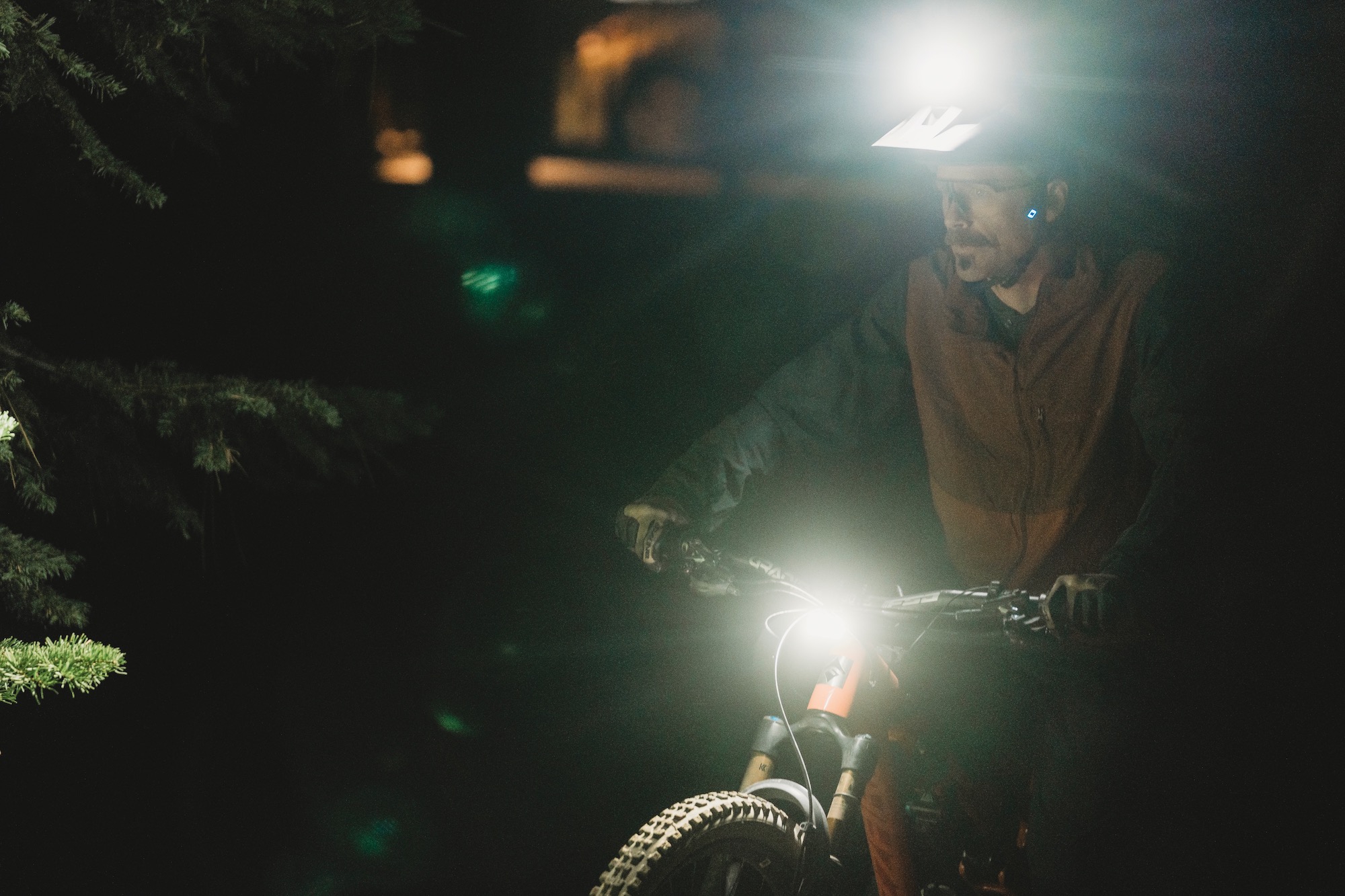
The Best Mountain Bike Lights of 2025
We tested mountain bike lights from top brands like Outbound Lighting, Niterider, Exposure, Knog, and more to find the best options to light your way through the night.
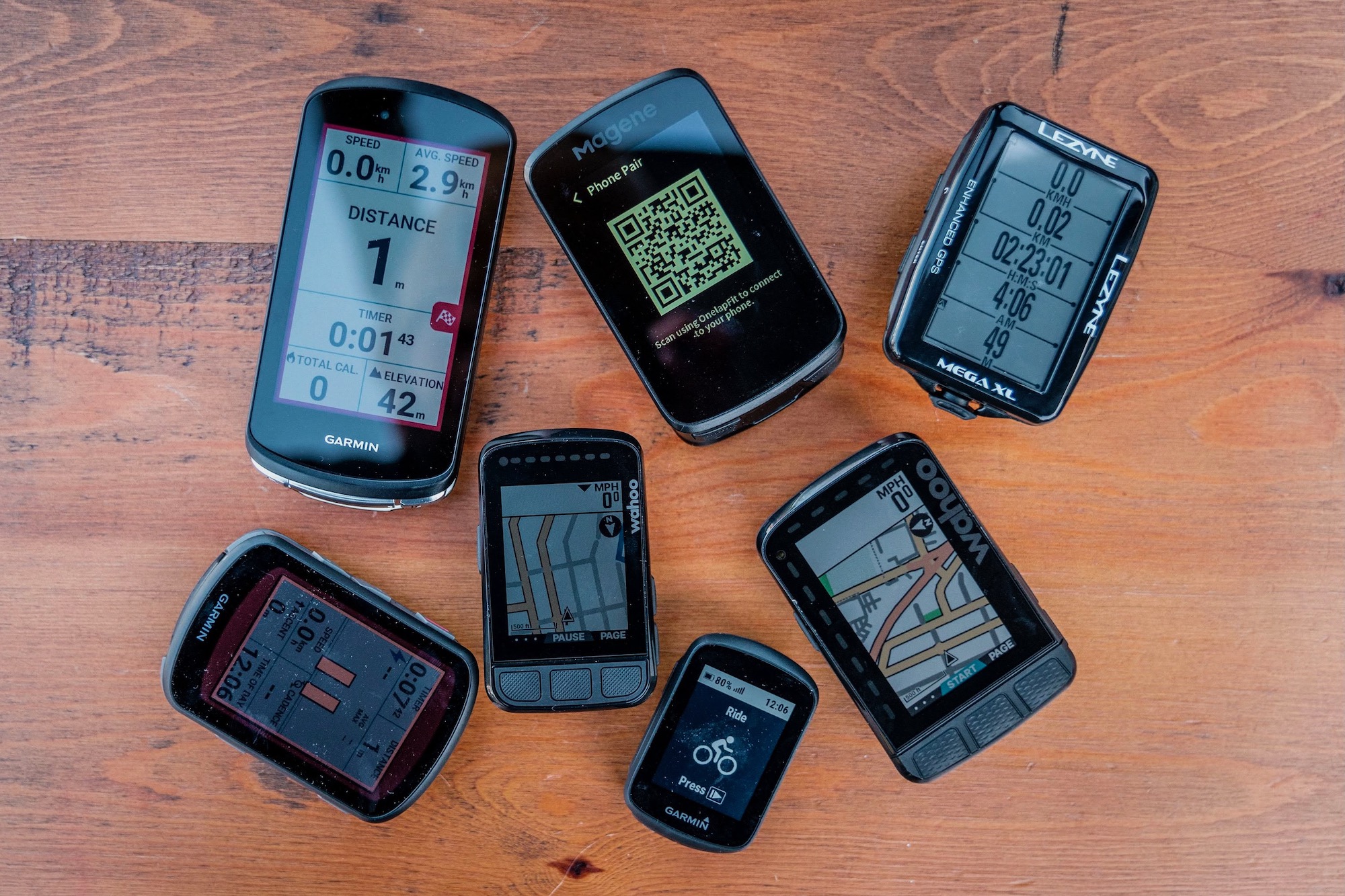
The Best Bike Computers of 2025
We tested the top models from Garmin, Wahoo, Lezyne, and more to find the best bike computers for all riders.






